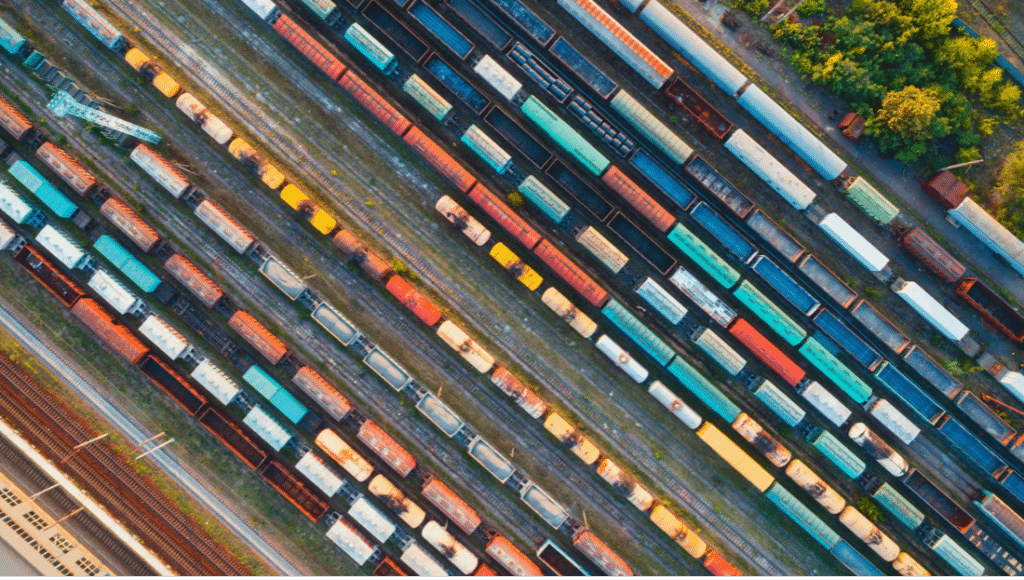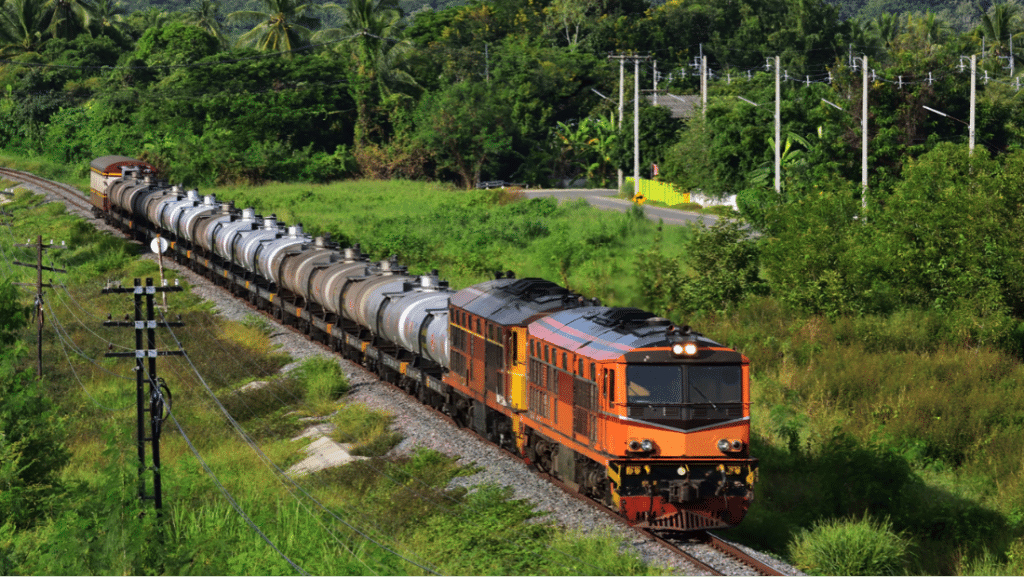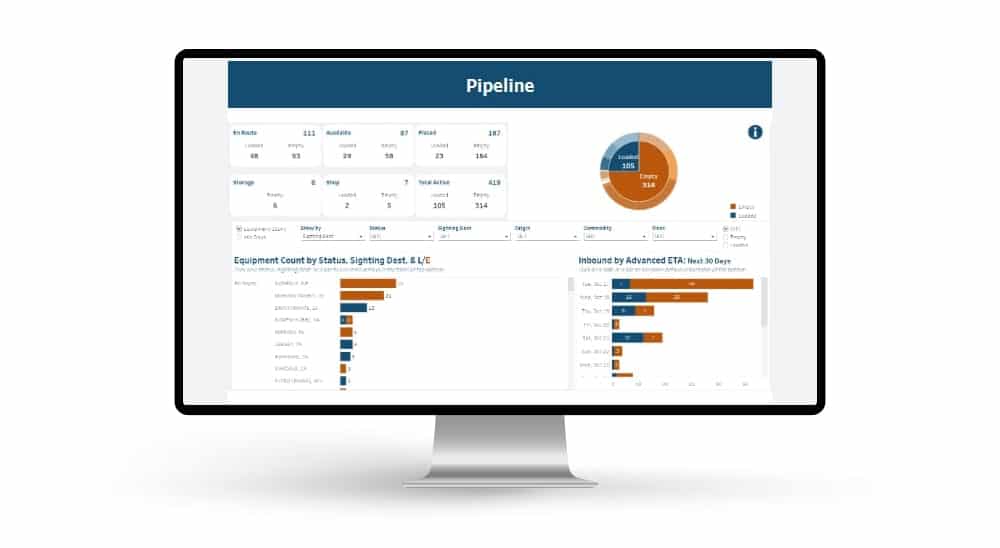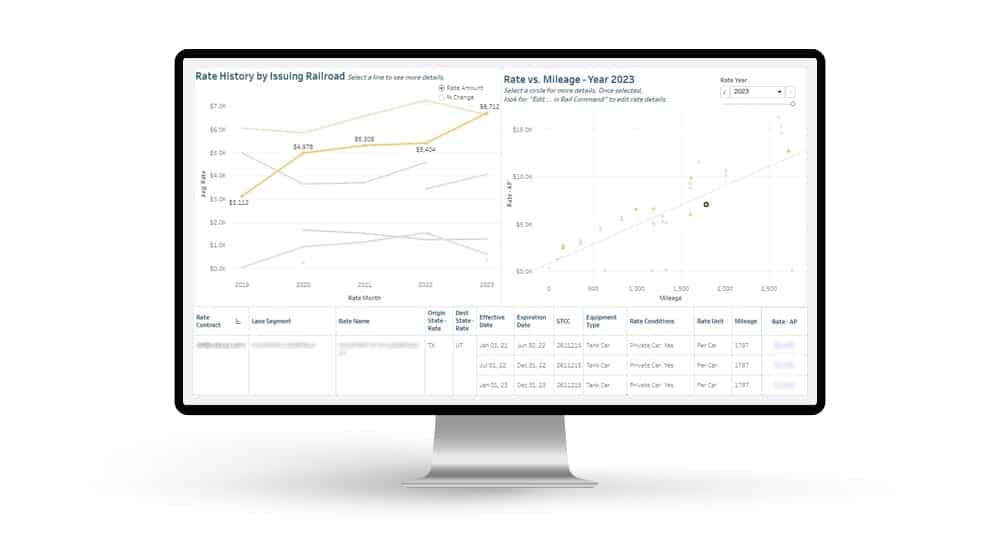This year we have seen an increase in businesses interested in exploring the potential of becoming a rail shipper. As the trucking industry continues to deal with driver shortages and high costs, many companies are starting to consider rail as an alternative to trucking. Rail is an excellent mode of transportation due to its advantages of cost savings, stability, environmental impact, and safety. We put together this blog post to provide some simple instructions to help beginners ship by rail.
Commodity
The first thing to consider for beginners to ship by rail is the commodity that you are thinking about moving via rail. The products that you will move are a major factor in determining which modes of shipping are appropriate! The commodity being moved is the foundation and basis for your rail shipment, and as a result, this is the starting point. So, let’s talk about the details of the commodity you will be shipping and the important questions to ask.
Time Sensitive Commodities
Is your commodity time sensitive?
Although rail is an excellent way of moving bulk commodities over great distances, it is also considered one of the slower modes. The rail network is rigid and delays resulting from weather events, derailments, embargoes, and more, can have a ripple effect on the entire North American rail network. For example, weather issues in the New Orleans area can result in delays to rail traffic in the Chicago area.
Rail loads often take two weeks or more to make it to their destination. For this reason, time sensitive loads may not be ideal for rail.
Commodity Type
Most commodities can move via rail. However, your specific commodity may affect which type of rail transportation you should trust to move your goods. For example, if you are shipping dry bulk goods, you can certainly take advantage of shipping on standard manifest trains, as that will be your most cost-effective rail option.
Conversely, if you are shipping finished goods, you are more likely to use an intermodal shipping option. With this option, your goods will be containerized and moved in the same container on truck, rail, and if shipping internationally, on vessel.
Distance of Move
Rail transportation has been shown to be cost effective over long distances, thanks to fuel-efficient trains. In fact, on a single gallon of gas a train can move one ton of freight 492 miles!
This makes rail the obvious choice for both your wallet and our environment for movements longer than 400 miles! However, the savings of shipping by rail decline when the distance from the origin to the destination is short and involves multiple railroads. Even with short moves, the railroads still have base cost to move the goods and their overall ability to mitigate costs over many miles becomes hindered.
Origin and Destination
Another important detail to consider when looking at the distance of your move is where your move begins and where it ends.
Because rail shipping relies on tracks that have already been placed, and cannot easily be removed or changed, rail transportation is limited to certain routes. If where your supply chain begins and ends is not rail served, you will have to figure out how to get your commodities to and from railcars.
One method to accomplish this is transloading. Transloading is when goods are transferred from one mode of transportation to another. For rail, that normally means taking something from a railcar and placing it into a truck, or vice versa. For example, let’s say your origin location is rail served but your destination is not. In this scenario you can load directly to railcars at your origin, but you will need to use a transload facility near your destination, so the product can be transloaded to truck for the final move to your destination.
Railcars and Volume
If you are interested in starting in rail shipping, you may still be wondering, what about a railcar?
This answer depends on multiple variables. Railcars can be purchased, leased from railcar manufacturers and owners, or supplied by the railroad. If you anticipate consistent rail volume, you may prefer to lease or purchase your own railcars, instead of using railroad provided railcars.
If you anticipate infrequent movements via rail, your better option may be to use railroad-provided railcars, also known as system cars. These are one-time use railcars that you pay for as part of the freight rate.
Railcars and Commodities
Another variable to help beginners ship by rail is to consider your commodity type. Some commodities cannot be shipped in system cars. Instead, you must lease or purchase railcars. Generally speaking, the only type of system cars available are flat cars, box cars, hopper cars, and automotive cars. If your commodity is bulk liquid, sensitive to getting wet, or has other special considerations, you will need to procure your own railcars. In this process, you will also determine the type of railcar that best suits your needs. Here are some common examples:
- If you are moving any type of free-flowing liquid, you will want to ship it in a tank car.
- If you are moving free-flowing dry bulk, you may want a hopper car. However, if you are moving dry bulk that cannot be exposed to the elements, you may want a covered hopper car.
- If you are moving palleted goods, you will want to use a box car.
The railcar owner that you are working with can help you determine the best option for your specific requirements.
Take Advantage of Rail Shipping
Should you take advantage of shipping by rail?
Rail is an incredible mode of transportation due to its ability to transport a massive amount of goods at one time. In fact, when comparing railcars vs trucks, one railcar is typically able to handle 3-4 truck loads worth of goods! However, due to trains moving massive amounts of goods for many companies at one time, trains are forced to stop though transit to both add and remove cars. This contributes to rail shipments being slower than truck shipments.
One aspect of rail that is similar to truck is the freight rate process. In rail, your volume may impact the overall rate you are given by the railroads. If you have significant volume, you may have the leverage to negotiate freight rates with the railroads. If you are not able to negotiate private freight rates, you will be required to ship on a railroad’s public rate, also known as tariff rates.
If you are contemplating a new rail served location, you should consider selecting a location with access to more than one railroad. This will give you leverage in negotiating rates because your location is now competitive, meaning you have more than one rail carrier you can ship with.
Final Thoughts
If you’re one of the many shippers who is considering rail for the first time, welcome! Although there is a learning curve to rail shipping, your cost savings can be significant. Before you jump in, consider the product, distance of the move, rail access, and railcar requirements.
If you find yourself unsure of where to start, don’t worry. Here at RSI Logistics, we can help you get started in rail shipping! Our experienced staff is able to guide you through the process. Reach out to find out more.





 Automated exception reporting of the railcar tracking data makes it easy to identify and troubleshoot jeopardized shipments, thereby enabling you to provide better service to your stakeholders.
Automated exception reporting of the railcar tracking data makes it easy to identify and troubleshoot jeopardized shipments, thereby enabling you to provide better service to your stakeholders. Receive notification of pending rate expirations. Tariff changes and fuel surcharges can be automatically updated.
Receive notification of pending rate expirations. Tariff changes and fuel surcharges can be automatically updated.